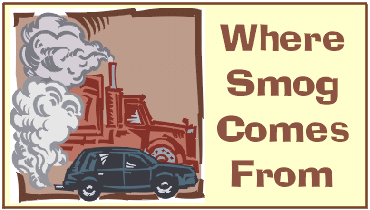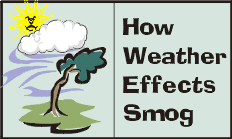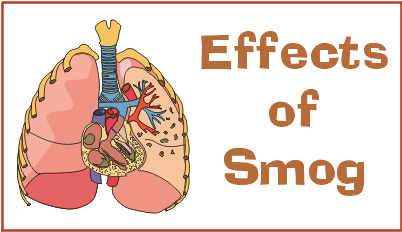 |
 |
 |
 |
 |
 |
|
|
|
|
|
|
|
 |
 |
 |
 |
 |
 |
|
|
|
|
|
|
|
e.g. burning octane (petrol):
2C8H18
+ 25O2 ==>
16CO2 + 18H2O
Carbon Monoxide
(CO)
Carbon monoxide is mostly produced
through the incomplete buring of organic compounds (hydrocarbons). This
occurs when the amount of oxygen available is limmited.
e.g. burning octane (petrol):
Nitrogen Oxide
(NO)
Nitrogen oxide is produced through
the combination of oxygen and nitrogen from the air at very high temperatures.
This can occur naturally as the result of lightning strikes but is more
common in the hot cylinders of car engines as they burn fuel in air.
Reaction:
N2 + O2
(+ high temperature ~ 2000 C) ==>
2NO
Nitrogen Dioxide
(NO2)
Nitrogen dioxide is produced through
the further reaction of nitrogen oxide with oxygen in the air. This reaction
is relatively fast and is increased further by the presence of heat and
sunlight.
Reaction:
2NO + O2
==> 2NO2
Ozone (O3)
Ozone in the troposphere (ground
level) is produced from the combination of atmospheric oxygen. This reaction
is catalysed by nitrogen dioxide and sunlight, making ozone a secondary
pollutant. The reaction proceeds as follows:
Reaction: 3O2
( + NO2 catalyst & Sunlight)
==> 2O3
PAN gas (C2H3N2O5)
PAN gas (peroxyacetalnitrate) is
produced from the combination of hydrocarbons, carbon dioxide and nitrogen
dioxide in the pressence of sunlight and heat. It has the following structure:

Acid Rain
(H2SO4)
Sulphuric acid is produced from
the reaction of sulphur dioxide with ozone, the resulting sulphite ions
then react with water vapour in the atmosphere to produce sulphuric acid.
Reactions:
SO2 + O3
===> SO3
+ O2
 |
 |
 |
 |
 |
 |
|
|
|
|
|
|
|